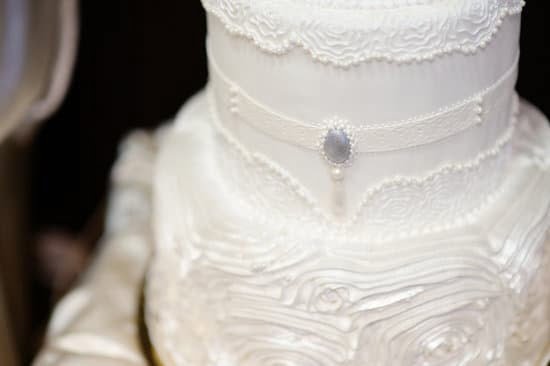Are you looking to add a special touch to your homemade baked goods? Look no further than these simple cake decorating ideas. Decorating a cake doesn’t have to be complicated or require professional skills.
With the right tools and a little creativity, you can easily achieve stunning results that will impress your friends and family. In this article, we’ll explore the beauty of simple cake decorating and provide you with essential tips and techniques to create beautiful, professional-looking cakes at home.
When it comes to cake decorating, having the right tools and supplies is essential. In the following sections, we will discuss the basic tools and supplies that every aspiring cake decorator should have in their arsenal. From piping bags to fondant smoothers, these tools will help you bring your creative vision to life.
Whether you’re a beginner or have some experience in cake decorating, mastering basic techniques is crucial for creating beautiful cakes. We will cover some fundamental techniques that will help you get started on your cake decorating journey. Additionally, we’ll provide you with simple and creative design ideas that are sure to inspire your next baking project. So let’s get started and unleash your creativity with these simple cake decorating ideas.
Essential Tools and Supplies for Cake Decorating
When it comes to cake decorating, having the right tools and supplies can make all the difference in achieving professional-looking results. Here are some essential items that every aspiring cake decorator should have in their toolkit:
- Turntable: A turntable is essential for smoothly frosting and decorating a cake from all angles.
- Offset spatula: This tool makes it easy to spread and smooth frosting on the cake’s surface.
- Piping bags and tips: These are necessary for creating intricate designs with royal icing or buttercream.
- Bench scraper: A bench scraper helps achieve clean, straight edges when frosting a cake.
- Fondant rolling pin: If you plan to work with fondant, a non-stick rolling pin is a must-have item.
- Decorating combs: These tools are used to create textured frosting designs on the sides of the cake.
In addition to these tools, it’s important to have a good supply of basic ingredients like flour, sugar, butter, and eggs. Investing in quality food coloring gels and edible decorations such as sprinkles or edible glitter can also elevate your cake designs.
By having these essential tools and supplies on hand, you’ll be well-equipped to explore simple cake decorating ideas and develop your skills as a decorator.
Now that we’ve covered the essential tools and supplies for cake decorating, let’s move on to learning some basic techniques that every beginner should master.
Basic Cake Decorating Techniques for Beginners
Crumb Coating
Before diving into intricate designs and decorations, it’s important for beginners to master the art of crumb coating. This simple technique involves applying a thin layer of icing to seal in the crumbs before adding the final layer of frosting. To crumb coat a cake, simply spread a thin layer of icing over the entire surface, then chill the cake for about 15 minutes before adding the final coat.
Piping Techniques
Piping is a versatile and essential skill in cake decorating. Using different piping tips and techniques, beginners can create beautiful borders, flowers, and other decorative elements on their cakes. Practice piping with different consistencies of icing to achieve varying textures and designs.
Buttercream Flower Decorations
Buttercream flowers are a classic and timeless decoration that every beginner should learn. With just a few simple piping techniques, such as the petal and leaf tip, beginners can create stunning floral arrangements on their cakes. Experiment with different color palettes and flower types to add an elegant touch to your creations.
As beginners hone their skills in these basic cake decorating techniques, they will gain confidence in their abilities to create beautifully decorated cakes using simple cake decorating ideas.
Simple and Creative Cake Design Ideas
When it comes to cake decorating, the possibilities are endless. Whether you’re a beginner or an experienced baker, there are plenty of simple cake decorating ideas to inspire your next creation. From elegant designs for special occasions to whimsical designs for kids’ parties, here are some creative cake design ideas to take your baking skills to the next level.
Ombre Buttercream Cake
Create a stunning ombre effect on your cakes by mixing different shades of buttercream. Start with a dark shade at the bottom and gradually lighten the color as you move towards the top of the cake. Use a frosting spatula to blend the colors smoothly for a seamless transition.
Naked Cake
For a rustic and minimalist look, consider making a naked cake. This style of cake decorating involves leaving the sides of the cake exposed, with just a thin layer of frosting between each layer. Top it off with fresh fruits and edible flowers for a simple yet elegant touch.
Geometric Patterns
Give your cakes a modern and stylish look by incorporating geometric patterns into your designs. Use fondant or piped frosting to create triangles, squares, or other shapes on the surface of the cake. You can also experiment with different colors to make your design even more eye-catching.
These simple cake decorating ideas are just a few examples of how you can elevate your cakes from ordinary to extraordinary. With some creativity and practice, you’ll be able to impress friends and family with beautifully designed cakes that not only taste delicious but also look stunning. From ombre buttercream cakes to geometric patterns, there’s no limit to what you can achieve with some basic tools and techniques in cake decorating.
Using Edible Flowers and Fresh Fruits for Decorating
When it comes to cake decorating, using edible flowers and fresh fruits can add a beautiful and natural touch to any cake. Not only do these decorations add color and flavor to your creations, but they also provide a healthy and refreshing element to your dessert. Here are some simple ideas for incorporating edible flowers and fresh fruits into your cake decorating:
- Use edible flowers such as roses, violets, pansies, or lavender to create a stunning floral arrangement on top of your cake.
- Consider using fresh fruits like berries, sliced kiwi, mango, or pineapple to create a vibrant and flavorful topping for your cakes.
- Add a pop of color and texture by garnishing your cake with mint leaves, citrus zest, or even edible gold or silver leaf for an elegant touch.
Incorporating these natural elements into your cake decorating not only elevates the visual appeal of your creations but also adds a delightful burst of flavor. Whether you’re creating a simple naked cake adorned with fresh berries or a more elaborate floral design using edible flowers, the options are endless when it comes to using nature’s bounty in your cake decorating.
So go ahead and get creative with edible flowers and fresh fruits to take your cakes to the next level.
Remember that when working with edible flowers and fresh fruits for decoration, it’s important to ensure that they are thoroughly cleaned and free from any pesticides or harmful chemicals before using them in your cake decorating. Additionally, consider the flavor profiles of the fruits you choose to complement the overall taste of the cake. With these simple cake decorating ideas in mind, you can create stunning and delicious treats that will impress any crowd.
Tips for Achieving Clean and Professional Looking Cakes
When it comes to cake decorating, achieving clean and professional looking cakes can seem like a daunting task, but with the right tips and techniques, it is definitely achievable. The key to creating a clean and professional looking cake is to pay attention to detail and practice precision in your decorating.
One simple cake decorating idea that can make a big difference in the overall look of your cake is to use a turntable when applying frosting. A turntable allows you to easily rotate the cake as you smooth out the frosting, resulting in a more even and polished finish.
Another tip for achieving clean and professional looking cakes is to invest in an offset spatula. This tool makes it easier to evenly spread frosting and create smooth edges on your cake.
In addition, paying attention to the details such as neat piping work, level layers, and straight edges can really elevate the overall look of your cake. Taking the time to ensure that each element of your cake is tidy and well-executed will contribute to a clean and professional appearance.
| Simple Cake Decorating Idea | Description |
|---|---|
| Use a Turntable for Frosting | A turntable helps achieve an even and polished finish when applying frosting |
| Invest in an Offset Spatula | An offset spatula allows for even spreading of frosting and smooth edges |
Incorporating Chocolate and Candy Decorations
When it comes to simple cake decorating ideas, incorporating chocolate and candy decorations can add a fun and delicious element to any cake design. Whether you’re looking to create a whimsical birthday cake or an elegant wedding cake, using chocolate and candy can take your cakes to the next level.
One simple and popular way to incorporate chocolate into your cake design is by creating chocolate shavings or curls. These can be easily made by using a vegetable peeler to shave a bar of chocolate.
You can then sprinkle the shavings or curls on top of the cake for a beautiful and tasty decoration. Additionally, using melted chocolate in a piping bag to create intricate designs on parchment paper that will harden and can be placed on the cake adds an elegant touch.
For those who have a sweet tooth, adding candy decorations to your cakes can be a playful and charming choice. You can use colorful candies like M&Ms, gummy bears, or sprinkles to create vibrant designs on your cakes. This is not only visually appealing but also adds a delightful crunch and burst of flavor when enjoyed.
It’s important to note that when using chocolate and candy decorations on cakes, it’s essential to consider the taste and texture of these elements with the overall flavor profile of the cake itself. While these decorations can enhance the look of your cake, they should also complement the taste for an unforgettable dessert experience.
| Chocolate Cake Decoration Ideas | Candy Cake Decoration Ideas |
|---|---|
| Using chocolate shavings or curls for an elegant touch | Adding colorful candies like M&Ms or gummy bears for a playful design |
| Using melted chocolate in a piping bag for intricate designs | Using sprinkles for added texture and visual appeal |
| Considering taste and texture when choosing chocolate/candy decorations | Making sure candy decorations complement the overall flavor profile of the cake |
Creative Ways to Use Piping and Fondant for Decoration
In conclusion, the art of simple cake decorating is a delightful and rewarding skill to have. With the essential tools and supplies, basic techniques, and creative design ideas, anyone can create beautiful and professional-looking cakes at home. The use of edible flowers, fresh fruits, chocolate, and candy decorations not only adds visual appeal but also enhances the taste of the cake. Moreover, incorporating piping and fondant for decoration allows for endless creativity and customization.
For those looking to impress guests at gatherings or simply wanting to add a personal touch to special occasions, learning simple cake decorating ideas is definitely worth the effort. Whether it’s a birthday celebration, anniversary, or just a casual get-together, a beautifully decorated cake can truly be the centerpiece of any event.
By following these tips and techniques, individuals can elevate their baking skills and create stunning works of edible art that are sure to be enjoyed by all.
Frequently Asked Questions
How Do You Decorate a Cake Simply?
Decorating a cake simply can be done by using basic techniques such as spreading a layer of frosting evenly, piping on some simple decorations like swirls or dots, and adding fresh fruit or edible flowers for a pop of color. Keeping the design minimal and clean can also create an elegant look.
How Do You Make a Plain Cake Look Fancy?
To make a plain cake look fancy, consider adding layers with different flavors and fillings, and then covering it with a smooth layer of fondant or buttercream. Adding intricate designs using piping tips, edible glitter, or even gold leaf can elevate the look of the cake.
How to Decorate Cake in Home Simple?
Decorating a cake at home can be simple by using tools like offset spatulas for spreading frosting, piping bags with different tips for creating various designs, and food coloring to add vibrant colors. You can also use everyday items like toothpicks to create unique textures in the frosting.
With practice and patience, decorating cakes at home can become an enjoyable and rewarding skill.

Welcome to our cake decorating blog! My name is Destiny Flores, and I am the proud owner of a cake decorating business named Cake Karma. Our mission is to provide delicious, beautiful cakes for all occasions. We specialize in creating custom cakes that are tailored specifically to each customer’s individual needs and tastes.





